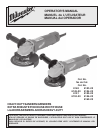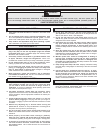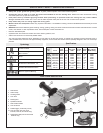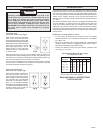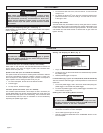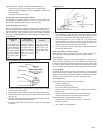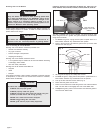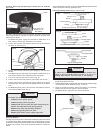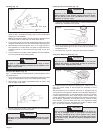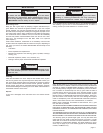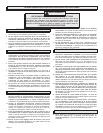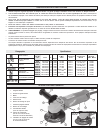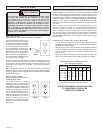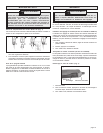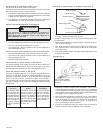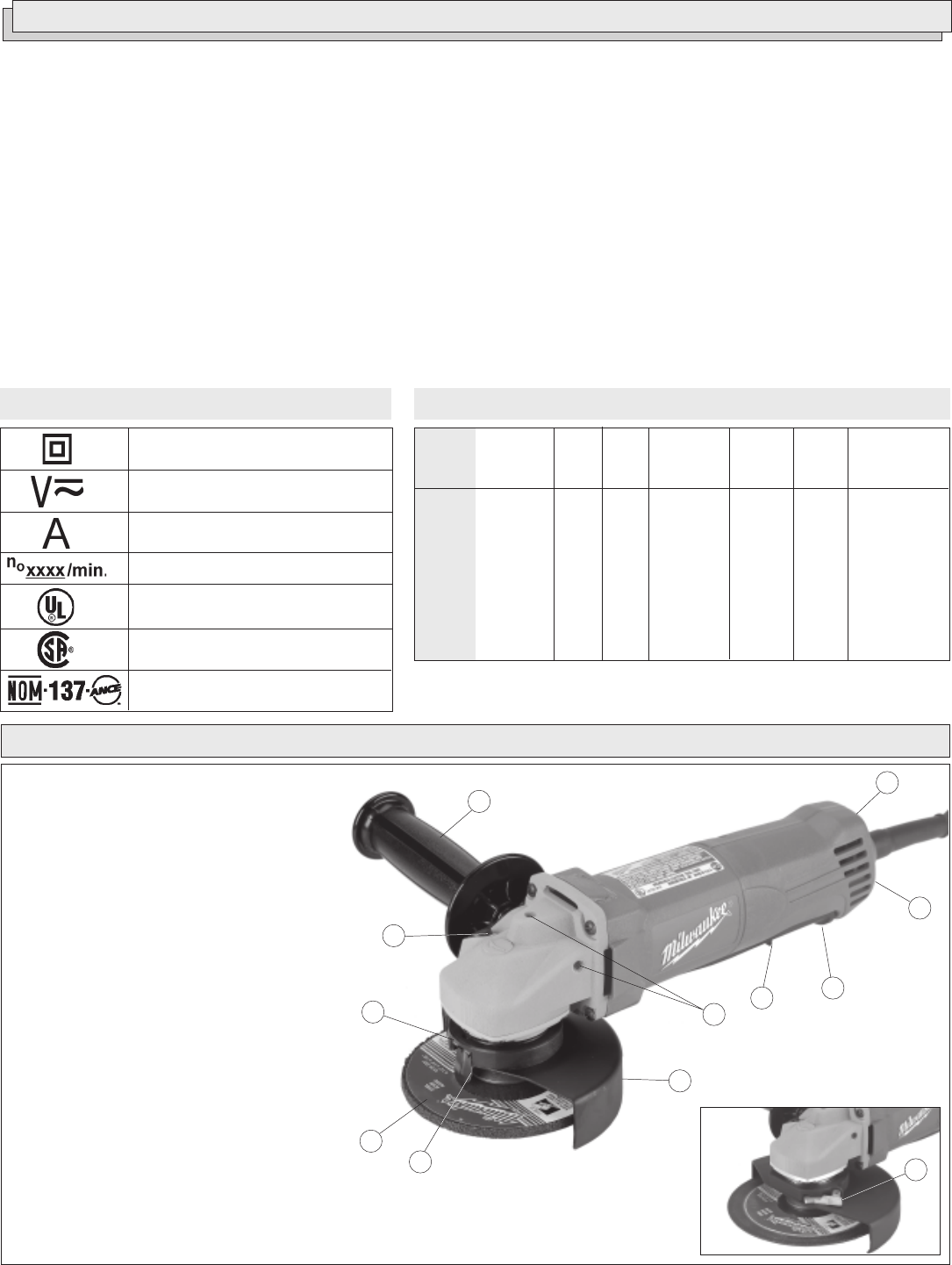
page 4
1. Side handle
2. Guard clamp
3. Grinding wheel
4. Lock lever
5. Wheel guard
6. Spindle lock button
7. Side handle sockets
8. Lock-off button
9. Paddle trigger (under body of tool)
10. Lock-on button (Cat. No. 6148,
6149-20, 6154-20, & 6156-20 only)
11. Speed control dial (Cat. No. 6154-20 &
6156-20 only)
FUNCTIONAL DESCRIPTION
Symbology
Volts Alternating Current/
Direct Current
No Load Revolutions per Minute (RPM)
Amps
Canadian Standards Association
Underwriters Laboratories, Inc.
Double Insulated
Specifications
Cat.
No.
6148
6149-20
6151
6152-20
6153-20
6154-20
6155-20
6156-20
6160-20
No Load
RPM
10000
10000
10000
10000
11000
4000-11000
11000
4000-11000
9000
Volts
120 AC/DC
120 AC/DC
120 AC/DC
120 AC/DC
120 AC/DC
120 AC
120 AC/DC
120 AC
120 AC
Spindle
Thread
Size
5/8"-11
5/8"-11
5/8"-11
5/8"-11
5/8"-11
5/8"-11
5/8"-11
5/8"-11
5/8"-11
Amps
8.5
8.5
8.5
8.5
12
12
12
12
11
Wheel
Size
4-1/2"
5"
4-1/2"
5"
4-1/2"
4-1/2"
5"
5"
6"
Min. Wheel
RPM Rating
12000
12000
12000
12000
12000
12000
12000
12000
10000
SPECIFIC SAFETY RULES SANDERS AND GRINDERS
1. Always use proper guard with grinding wheel. A guard protects operator from broken wheel fragments.
2. Accessories must be rated for at least the speed recommended on the tool warning label. Wheels and other accessories running
over rated speed can fly apart and cause injury.
3. Hold power tools by insulated gripping surfaces when performing an operation where the cutting tool may contact hidden
wiring or its own cord. Contact with a live wire will make exposed metal parts of the tool live and shock the operator.
4. Keep hands away from all cutting edges and moving parts.
5. Maintain labels and nameplates. These carry important information. If unreadable or missing, contact a MILWAUKEE service facility for a free
replacement.
6. WARNING! Some dust created by power sanding, sawing, grinding, drilling, and other construction activities contains chemicals known to cause
cancer, birth defects or other reproductive harm. Some examples of these chemicals are:
lead from lead-based paint
crystalline silica from bricks and cement and other masonry products, and
arsenic and chromium from chemically-treated lumber.
Your risk from these exposures varies, depending on how often you do this type of work. To reduce your exposure to these chemicals: work in
a well ventilated area, and work with approved safety equipment, such as those dust masks that are specially designed to filter out microscopic
particles.
Input
Watts
1000
1000
1000
1000
1400
1400
1400
1400
1300
Mexican Approvals Marking
4
Cat. No.
6160-20
1
11
10
9
8
5
7
4
3
2
6



